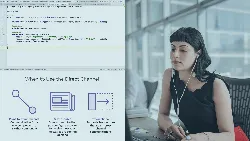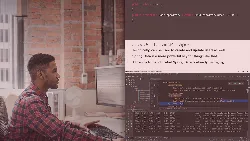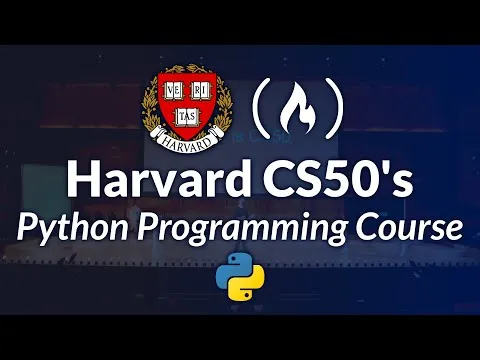
Spring Integration: Message System Design Patterns 
Spring Integration provides a comprehensive framework for integrating complex systems. This course covers the fundamentals of message design patterns and how to use the various message types and channels available in Spring Integration. Gain the skills to effectively design and implement message systems. ▼
ADVERTISEMENT
Course Feature
![]() Cost:
Cost:
Free Trial
![]() Provider:
Provider:
Pluralsight
![]() Certificate:
Certificate:
Paid Certification
![]() Language:
Language:
English
![]() Start Date:
Start Date:
On-Demand
Course Overview
❗The content presented here is sourced directly from Pluralsight platform. For comprehensive course details, including enrollment information, simply click on the 'Go to class' link on our website.
Updated in [February 21st, 2023]
(Please note the following content is from the official provider.)
Learn how to integrate complex systems using Spring Integration by building a firm foundation in message design patterns and understanding how to implement the different types of messages and channels available in Spring Integration.
Effectively integrating complex systems is a difficult task, but fortunately Spring Integration implements design patterns and best practices to help you do so. In this course, Spring Integration: Message System Design Patterns, you will learn foundational knowledge to select the best messaging design patterns and choose the most appropriate channel strategies for your business cases. First, you will learn about the message construction design patterns and when to use them. Next, you will discover the various messaging channels that Spring Integration provides and how to implement them in your applications. Finally, you will explore how to handle errors, both for simple synchronous messaging use cases as well as more complex asynchronous messaging use cases. When you are finished with this course, you will have the skills and knowledge to adopt the best messaging design patterns and channels for all of your business needs.
(Please note that we obtained the following content based on information that users may want to know, such as skills, applicable scenarios, future development, etc., combined with AI tools, and have been manually reviewed)
What skills and knowledge will you acquire during this course?
By taking Spring Integration: Message System Design Patterns, learners will acquire the skills and knowledge to effectively integrate complex systems using Spring Integration. This includes an understanding of the message construction design patterns and when to use them, as well as the various messaging channels that Spring Integration provides and how to implement them in their applications. Additionally, learners will learn how to handle errors, both for simple synchronous messaging use cases as well as more complex asynchronous messaging use cases.
How does this course contribute to professional growth?
Spring Integration: Message System Design Patterns contributes to professional growth by providing learners with the foundational knowledge to select the best messaging design patterns and choose the most appropriate channel strategies for their business cases. Learners will gain an understanding of the message construction design patterns and when to use them, as well as the various messaging channels that Spring Integration provides and how to implement them in their applications. Additionally, learners will learn how to handle errors, both for simple synchronous messaging use cases as well as more complex asynchronous messaging use cases. By the end of this course, learners will have the skills and knowledge to adopt the best messaging design patterns and channels for all of their business needs.
Is this course suitable for preparing further education?
Spring Integration: Message System Design Patterns is a comprehensive course that provides learners with the foundational knowledge to select the best messaging design patterns and choose the most appropriate channel strategies for their business cases. This course is suitable for preparing further education, as it provides learners with the skills and knowledge to adopt the best messaging design patterns and channels for all of their business needs. Additionally, learners can further their knowledge by taking additional courses on Spring Integration, such as Spring Integration: Advanced Message System Design Patterns, or by exploring other related topics, such as distributed systems, microservices, and cloud computing.
Course Provider

Provider Pluralsight's Stats at AZClass
Pluralsight ranked 16th on the Best Medium Workplaces List.
Pluralsight ranked 20th on the Forbes Cloud 100 list of the top 100 private cloud companies in the world.
Pluralsight Ranked on the Best Workplaces for Women List for the second consecutive year.
AZ Class hope that this free trial Pluralsight course can help your Java skills no matter in career or in further education. Even if you are only slightly interested, you can take Spring Integration: Message System Design Patterns course with confidence!
Discussion and Reviews
0.0 (Based on 0 reviews)
Explore Similar Online Courses

Creating an Emotionally Intelligent Workplace Culture

Securing Spring Data REST APIs

RDBMS PostgreSQL

Intro To PostgreSQL Databases With PgAdmin For Beginners

PostgreSQL: Client Applications

Mastering SQL using Postgresql

Database Design and Basic SQL in PostgreSQL

PostgreSQL: Advanced Queries

Spatial SQL with Postgres : A language for geographers

Learn SQL Using PostgreSQL: From Zero to Hero

PostgreSQL Essential Training


Start your review of Spring Integration: Message System Design Patterns